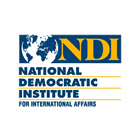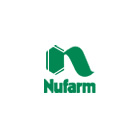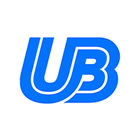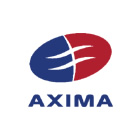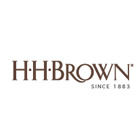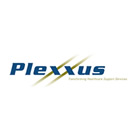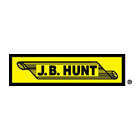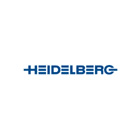
Network File Systems: NFS, SMB & AFP Explained
Author: Michael J. Leaver (2BrightSparks Pte. Ltd.) and ChatGPT (OpenAI)
Network File Systems (NFS) have transformed data sharing, storage, and management in organizations. By offering the ability to access multiple computers from a shared set of files over the network, NFS have become integral to IT design in contemporary times.
A network file system simply makes the files and directories on a computer available to share over a network to another computer. It is achieved through the use of a client-server model with the server holding the files and the client being the one to access them. The two communicate based on protocols such as NFS, SMB, and AFP, which provide a secure and efficient means of transferring the information.
The idea of network file systems dates back to the 1980s. One of the first was Sun Microsystems' Network File System (NFS), which became a standard for UNIX environments. In the Windows environment, Microsoft's Server Message Block (SMB) and later Common Internet File System (CIFS) became the standard. They've since evolved, providing better performance, security, and more features such as file locking and replication.
The Server Message Block (SMB) Protocol
Server Message Block (SMB), also known as Common Internet File System (CIFS), is a network protocol applied chiefly for shared access to files, printers, and other networked resources.
The SMB protocol was initially created by IBM in the 1980s. It was later taken over by Microsoft and enhanced in numerous ways, effectively making it mainstream as the Windows networking standard. Over time, several versions of SMB have been created, with each one improving in its functionality along with security features.
Advantages of SMB
- Compatibility: SMB is widely supported across different operating systems, including Windows, macOS, and Linux.
- File Sharing: It provides robust file sharing capabilities, allowing multiple users to access, read, and write to shared files.
- Printer Sharing: SMB is not just for files; it also supports printer sharing, enabling users on the same network to use a single printer.
- Security: Modern versions of SMB offer various security features, including encryption and strong authentication methods.
- Convenience: The protocol supports both peer-to-peer and client-server models, making it versatile for different network setups.
Disadvantages of SMB
- Complexity: SMB can be complex to set up and manage, especially in larger network environments.
- Performance: While generally robust, the performance of SMB can suffer when handling a large number of small files or when used over high-latency network connections.
- Security Concerns: Older versions of SMB have known security vulnerabilities. It's crucial to keep the protocol updated to the latest version to mitigate risks.
- Platform Optimization: While SMB is cross-platform, it is most optimized for Windows environments, which might lead to performance or compatibility issues on non-Windows systems.
SMB is a tried-and-true, ubiquitous networking protocol. It is not perfect but its versatility and enormous capabilities make it a modern network architecture institution. Just like any other technology, you should know both its advantages and disadvantages so that you can try to get the most out of its capabilities.
Network File System (NFS)
Network File System (NFS) is a distributed file system protocol that enables users to access files over a network in the same way they access local storage. Developed initially by Sun Microsystems in the 1980s, NFS became a de facto standard for file sharing on UNIX and Linux.
Sun Microsystems created NFS in 1984 as part of its Network Computing Architecture. Due to its simplicity and user-friendliness, the protocol became popular and was quickly adopted as a standard by UNIX-based operating systems. More recent versions of NFS have since been created to offer better performance, security, and compatibility. The latest version, NFSv4, offers stateful operations and enhanced security features.
Advantages of NFS
- Easy to Set Up: NFS is relatively easy to set up and manage, making it accessible for users with varying levels of technical expertise.
- High Performance: NFS is designed for high throughput and low latency, making it suitable for environments where performance is a priority.
- Cross-Platform: While most commonly used on UNIX and Linux systems, NFS clients exist for other operating systems, including Windows.
- Scalability: NFS can easily scale to accommodate growing storage and user demands.
- File Locking: NFS supports file locking, which is essential for multi-user collaboration.
Disadvantages of NFS
- Security Concerns: Earlier versions of NFS had limited security features, making them susceptible to unauthorized access. While newer versions have improved security, it remains a concern.
- Network Dependency: Being a network file system, the performance and availability of NFS are highly dependent on the network's reliability.
- No Native Encryption: NFS does not provide native encryption for data in transit, although this can be mitigated using external solutions.
- Complexity in Large Environments: While NFS is easy to set up for small networks, it can become complex to manage in larger, more heterogeneous environments.
NFS has been a mainstay of network file sharing, especially in Linux and UNIX systems. Its simplicity, performance, and scalability have made it popular among many organizations. But, as with any other technology, there are limitations such as security issues and network reliance. Knowing these will allow you to make an intelligent choice on whether NFS is the best solution for your requirements.
Apple Filing Protocol (AFP)
Apple Filing Protocol (AFP) is a network protocol created by Apple Inc. for their Mac OS systems. It was designed to give high-performance file sharing over a network. AFP, though largely supplanted by SMB in later versions of macOS, remains an important part of Apple's networking legacy.
AFP was originally created in the 1980s as a component of Apple's AppleTalk network system. It was the prevailing protocol for file sharing on Mac networks for a long time. AFP was made to cooperate very well with the HFS and HFS+ file systems, which were the native file systems of Mac OS for a long time. AFP has been updated many times over the years, but it has been replaced by more universal protocols like SMB increasingly.
Advantages of AFP
- Optimized for Mac: AFP was specifically designed for the Mac ecosystem, providing seamless integration and optimal performance on Mac systems.
- Resource Fork Support: AFP supports Mac-specific file features like resource forks, something that other protocols like SMB and NFS may not handle as well.
- File Locking: AFP supports file locking, allowing multiple users to work on shared files without conflicts.
- Spotlight Search: AFP allows for Spotlight search capabilities over network drives, providing a powerful search functionality.
Disadvantages of AFP
- Limited Cross-Platform Support: AFP is optimized for Mac systems and does not offer the same level of support or performance on non-Mac systems.
- Being Phased Out: Apple has been moving away from AFP in favor of SMB, which means future support and updates for AFP are uncertain.
- Security: While AFP does offer some security features, they are generally considered to be less robust than those offered by more modern protocols like SMBv3.
Apple Filing Protocol was an integral part of Mac-based networking for a long time. Mac-specific optimizations made it a suitable option for Apple networks. As networking requirements changed and became increasingly cross-platform, though, AFP has given way to more flexible protocols such as SMB. An understanding of AFP's features and history can give useful insight into its limitations and capabilities, particularly for those dealing with legacy Mac environments.
SSH File System (SSHFS)
SSH File System (SSHFS) is a network file system that enables mounting and accessing of remote files and directories on a server. SSHFS uses the Secure Shell (SSH) protocol, providing secure file transfer.
SSHFS originated as an extension to the SSH protocol to provide a secure and simple method for remote file access. It was initially developed for UNIX-like systems and has gained popularity because of the simplicity and security features it provides. SSHFS utilizes the SFTP subsystem of SSH to provide file transfer capabilities.
Advantages of SSHFS
- Security: SSHFS offers robust security features, including strong encryption and authentication, making it ideal for secure data transfers.
- Easy to Use: SSHFS is relatively simple to set up and use, requiring only SSH access to the remote server.
- Platform Independence: While originally designed for UNIX-like systems, SSHFS clients are available for various platforms, including Windows.
- Network Efficiency: SSHFS is optimized for low-bandwidth and high-latency networks, making it suitable for internet-based file sharing.
- File Locking: SSHFS supports advisory file locking, although this is dependent on SFTP server capabilities.
Disadvantages of SSHFS
- Performance: While secure, the encryption overhead can impact performance, especially for high-throughput needs.
- Server Requirements: SSHFS requires SSH access to the remote server, which may not be available in all environments.
- Limited Features: SSHFS does not offer some advanced features available in other network file systems, such as native snapshots or deduplication.
- Dependency on SSH: The reliance on SSH means that if the SSH service is compromised or misconfigured, the SSHFS mounts may also be at risk.
SSHFS is a very handy and secure way of accessing files remotely over a network. Its high security features have made it a solution of choice in environments where security of data is prioritized. However, it may not be the best solution for all use-cases, particularly those requiring high performance or specialized file system functionality. Understanding the strengths and weaknesses of SSHFS will allow you to determine if or not it is a suitable solution for your specific needs.
Distributed File System (DFS)
Distributed File System (DFS) is a set of client and server services that enable an organization to gather numerous distributed SMB file shares into a distributed file system. Created by Microsoft, DFS presents location transparency along with redundancy to enhance the availability of data in the event of failure or overloading.
Microsoft introduced DFS to add more functionality to its Windows Server operating systems. DFS was created to make it easier to share files in large enterprise networks by allowing multiple file shares to be organized into a single, logical namespace. DFS has evolved over the years, with additions such as the introduction of DFS Replication to enable synchronization of file servers across multiple sites.
Advantages of DFS
- Scalability: DFS allows for easy scaling of file shares, accommodating growing data and user demands.
- High Availability: By providing multiple paths to data, DFS enhances data availability. If one path fails, clients are automatically redirected to another.
- Load Balancing: DFS can distribute client connections among several file servers, effectively balancing the load.
- Namespace Management: DFS enables administrators to create a unified namespace, making file management simpler and more efficient.
- Replication: DFS Replication allows for data synchronization across different servers, ensuring data consistency.
Disadvantages of DFS
- Complexity: Setting up and managing DFS can be complex, especially in large and heterogeneous environments.
- Windows-Centric: DFS is optimized for Windows environments and may not offer the same level of support or performance on non-Windows systems.
- Replication Conflicts: In scenarios where the same file is modified at different locations, DFS Replication may encounter conflicts that require manual resolution.
- Bandwidth Usage: Replication features can consume significant network bandwidth, especially when initial synchronization is performed.
Distributed File System offers a rich feature set that strives to enhance file sharing and data availability for the enterprise. Scalability, high availability, and load balancing are features that will make it very appealing to large organizations. Windows-centrism and complexity can be drawbacks in heterogeneous or non-Windows environments. Considering the advantages and disadvantages of DFS will enable you to determine whether or not it is the best choice for your organization's needs.
Impact of Cloud Computing
Cloud computing has significantly impacted the way network file systems are used and deployed. Here are some key points:
- Accessibility: Cloud-based file systems can be accessed from anywhere with an internet connection, making it easier for remote teams to collaborate.
- Scalability: Cloud services offer virtually limitless storage, allowing organizations to easily scale their file systems as needed.
- Cost-Efficiency: Cloud storage solutions often come with pay-as-you-go pricing models, eliminating the need for large upfront investments in hardware.
- Security: Cloud providers invest heavily in security measures, including encryption and multi-factor authentication, to protect stored data.
- Integration: Cloud-based file systems often offer seamless integration with other cloud services, like databases and computing resources, simplifying the IT architecture.
Conclusion
Network File Systems have evolved significantly since their original inception, changing to accommodate the evolving demands of users and organizations. Cloud computing has opened up new possibilities for network file systems, with levels of accessibility, scalability, and security unimagined before. As technology marches on, it will be fascinating to see how network file systems further evolve to address future challenges and opportunities.
Noted Customers
© 2003-2025 2BrightSparks Pte. Ltd. | Home | Support | Privacy | Terms | Affiliate Program



